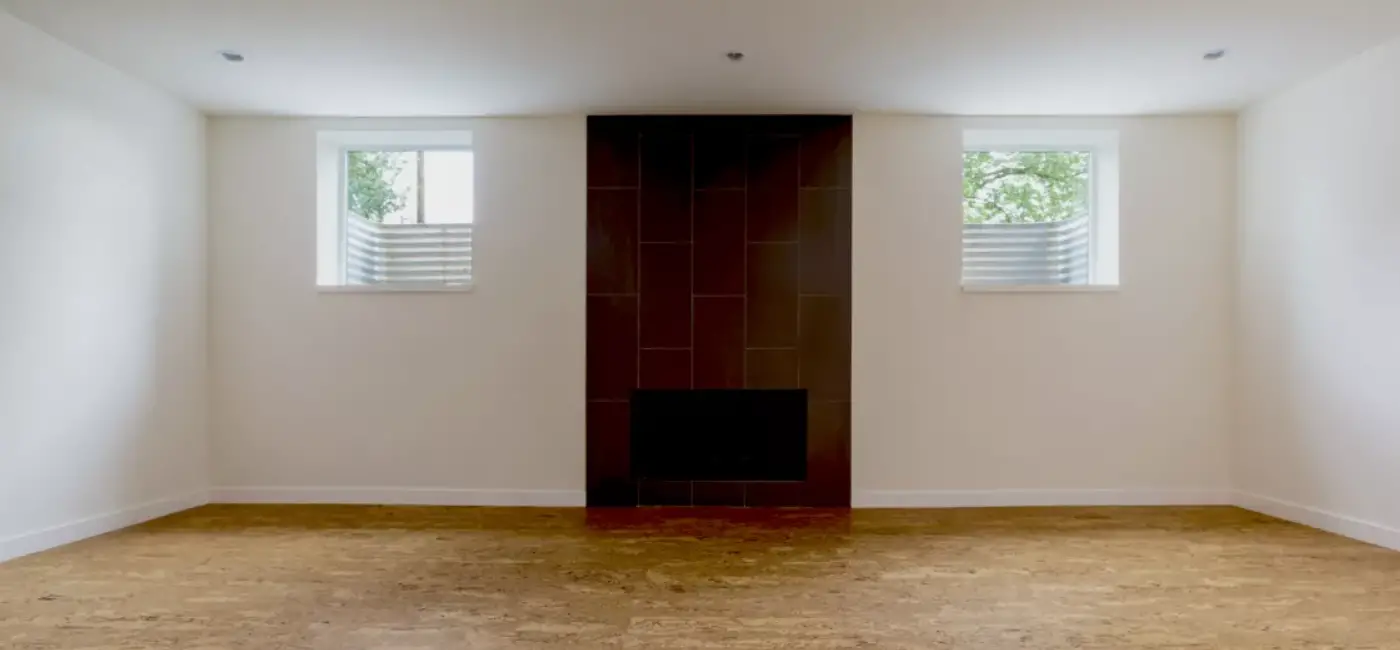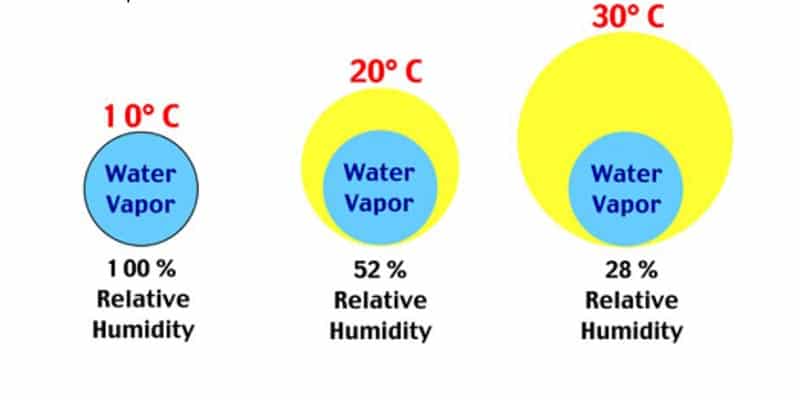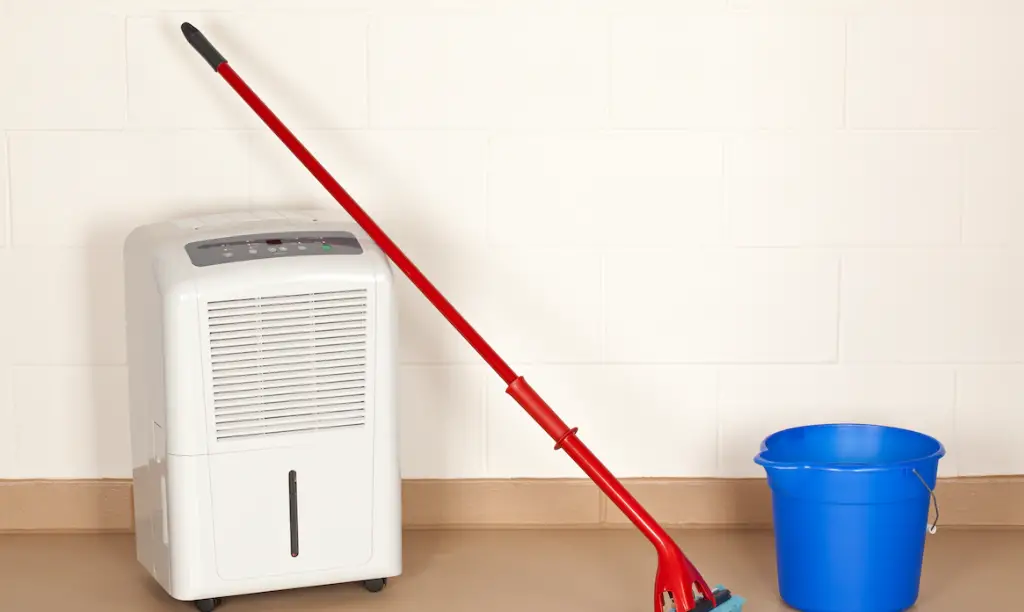A lot of people don’t think about the humidity level in their basement, but it’s an important factor to consider. If the humidity is too high, you could experience problems with mold and mildew. If it’s too low, you could experience problems with your furniture and other belongings. In this comprehensive guide, we will answer all of your questions about basement humidity levels and provide tips on how to maintain the ideal level for your home.
Why Basement Humidity Matters
The humidity level in your basement can have a big impact on your home. If the humidity is too high, you could experience problems with mold and mildew. If it’s too low, you could experience problems with your furniture and other belongings. That’s why it’s important to maintain the ideal humidity level in your basement.[3]

Causes of Excess Humidity
There are a few primary causes of high humidity in your basement:
- Poorly sealed windows and doors
- Leaky pipes
- Not enough ventilation
- Dampness in the soil around your foundation
If you have any of these issues, it’s important to address them as soon as possible. Otherwise, you could be dealing with mold, mildew, and other serious problems.[1]
Effects of Basement Humidity Issues
If you’ve ever dealt with a basement that’s too humid, you know how frustrating it can be. Not only is it uncomfortable to be in, but the excess moisture can also lead to a number of problems, like:
- Mold and mildew growth
- Musty odors
- Damage to stored belongings
- Peeling paint or wallpaper
- Condensation on windows[1]
So what is the ideal basement humidity level? Read on to find out.
Low RH Effects
If the relative humidity in your basement is too low, it can cause a number of problems in your home. Low RH can lead to:
- Dry air, which can be uncomfortable to breathe and can aggravate allergies and asthma.
- Static electricity, which can be annoying and dangerous.
- Cracks in wood floors and furniture.
- Paint peeling off walls.
To avoid these problems, it is important to maintain a healthy level of humidity in your basement.[1]

High RH Effects
High humidity in your basement can lead to a number of health problems, including:
- Respiratory problems such as asthma and allergies
- Skin conditions like eczema and psoriasis
- Sinus infections and headaches
Not only is high humidity uncomfortable, it can also be dangerous for your health. If you or someone in your family suffers from respiratory problems, it’s important to keep the humidity level in your basement low to avoid exacerbating symptoms.
Similarly, if you have skin conditions like eczema or psoriasis, high humidity can make them worse. Dry skin is more prone to cracking and bleeding, which can provide an entry point for bacteria and lead to infection.
Finally, high humidity can also cause sinus infections and headaches. If you find yourself suffering from frequent headaches or sinus infections, it’s worth checking the humidity level in your basement to see if it might be contributing to your symptoms.[1]
Ideal RH Levels
The ideal relative humidity (RH) level in a basement is between 30 and 50 percent. However, the optimal RH level will vary depending on the use of the space and the type of building materials present.
For example, if you are using your basement as storage for sensitive items such as electronics or musical instruments, you will want to maintain a lower RH level to prevent damage.
On the other hand, if you are using your basement as a living space, you may want to raise the RH level to make it more comfortable.[5]
Finished and Unfinished Basements
There are two types of basements – finished and unfinished. The ideal humidity level for each type of basement is different.
For an unfinished basement, the ideal relative humidity level is between 50% and 60%. This range will help to prevent mold and mildew growth, as well as wood rot. It will also make the space more comfortable for any occupants.
Wine Cellars
If you’re thinking about turning your basement into a wine cellar, then you’ll want to maintain a humidity level of around 50-60%. This will keep your wine at the optimal temperature and prevent it from drying out.
To achieve this level of humidity in your basement, you’ll need to use a humidifier. You can either purchase a stand-alone unit or one that attaches to your furnace. Whichever type you choose, be sure to get one that is the right size for your space.

Another option for maintaining the ideal humidity level in your basement is to install an exhaust fan. This will help to circulate the air and prevent any moisture from building up.
Finally, if you live in an area with high humidity, you may want to consider using a dehumidifier. This will help to remove any excess moisture from the air and keep your basement at a comfortable level.[1]
Other Factors to Consider
A basement exhaust is not a dehumidifier
There are other factors to consider when you’re trying to maintain the ideal basement humidity level. For example, your basement’s ventilation plays a role in keeping things dry. If your basement is particularly humid, you might want to invest in a dehumidifier. But be warned: a dehumidifier alone will not fix the problem if your basement is poorly ventilated. In fact, using a dehumidifier without also ensuring proper ventilation can actually make matters worse by trapping moisture inside.[4]
Keep a finished basement warm in the heating season
As the weather gets colder and you start running your furnace more often, it’s important to keep an eye on the humidity level in your basement. If the air is too dry, it can lead to problems like static electricity, cracks in wood floors and furniture, and respiratory issues. If the air is too humid, it can create an ideal environment for mold and mildew to grow.[4]
Get rid of basement carpeting
Carpeting is one of the prime breeding grounds for mold spores, so it’s best to get rid of it if you can. If you must keep your carpets, make sure they’re as dry as possible and vacuum them regularly.
Another way to reduce the chances of mold growth in your basement is to use a dehumidifier. Dehumidifiers work by pulling moisture out of the air, which can help to keep your basement at a comfortable humidity level.[4]
In an unfinished basement, store belongings properly
In an unfinished basement, store belongings properly to avoid moisture damage and keep your basement feeling comfortable.
When it comes to your basement, the lower the humidity levels, the better. That’s because high humidity can lead to all sorts of problems, including:
- Mold and mildew growth
- Musty odors
- Insect infestations
- Wood rot
- Warping of metal objects[4]
Why You Don’t Want a Humid Basement
If your basement is too humid, it can create the perfect environment for mold and mildew to thrive. Not only is this a health hazard for you and your family, but it can also cause serious damage to your home. Basement humidity can also lead to wood rot, which can weaken the structure of your home.
In addition to being a health hazard, high humidity levels in your basement can also make it uncomfortable to spend time in. If you have a finished basement, it can make it feel stuffy and muggy. No one wants to spend time in an uncomfortable space![5]
Signs of a High Basement Humidity Level
There are a few telltale signs that your basement’s humidity level might be too high. If you notice any of the following, it’s time to take action:
- Condensation on windows or walls
- Musty smells
- Visible mold or mildew growth
If you’re seeing any of these signs, don’t panic. There are a few things you can do to bring the humidity level down in your basement. But first, let’s talk about why high humidity is a problem in the first place.[5]
How to Lower Basement Humidity
There are a few things you can do to lower the humidity in your basement. One is to use a humidifier, which will help take some of the moisture out of the air. You can also ventilate your basement by opening windows or using fans. Another option is to seal any cracks or leaks in your basement so that moisture cannot get in. Finally, you can use dehumidifiers to remove moisture from the air.[5]

How Does A Drain Tile System Work?
Your home is constantly under attack from water. Water seeps in through cracks in the foundation, condenses on cold surfaces, and can even enter through the pores of concrete. A basement that isn’t properly waterproofed is especially vulnerable to this type of water damage.
One way to protect your basement from water damage is to install a drain tile system. Drain tile systems are installed around the perimeter of your basement, at the footing level. They collect any water that seeps through the foundation walls or floor and divert it away from your home.
Both types of drain tile systems are effective at protecting your basement from water damage. However, exterior drain tile systems are less likely to clog than interior drain tile systems.[1]
Comparison of Ideal Basement Humidity Levels by Season
Maintaining the ideal humidity level in your basement is crucial for preventing moisture-related issues. Below is a comparison of the ideal basement humidity levels for different seasons, helping you understand the seasonal variations and how to control humidity effectively.
| Season | Ideal Humidity Level | Effects of High Humidity | Preventive Measures | Dehumidification |
|---|---|---|---|---|
| Spring | 30-50% humidity | Mold and mildew growth, musty odors, potential for wood rot, and condensation on surfaces. | Ensure proper drainage, address exterior water entry points, and use exhaust fans or ventilation. | Use a dehumidifier to maintain humidity within the recommended range. |
| Summer | 30-50% humidity | Mold growth, dampness, condensation, and reduced air quality in the basement. | Seal any basement cracks, install a vapor barrier, improve ventilation, and use exhaust fans. | Run a dehumidifier during humid summer months to keep humidity in check. |
| Fall | 30-50% humidity | Mold and mildew growth, condensation on windows, and potential damage to stored items. | Seal foundation cracks, maintain gutters and downspouts, and inspect for leaks or seepage. | Continue using a dehumidifier to regulate humidity levels during the fall. |
| Winter | 30-50% humidity | Condensation on windows, potential for ice dam formation, and reduced comfort in the basement. | Inspect for leaks or drafts, ensure proper insulation, and use a humidifier to prevent excessively dry air. | Consider a whole-house humidifier to maintain appropriate humidity levels in winter. |
Explanation of the table:
- The table provides a comparison of the ideal basement humidity levels for different seasons, along with the effects of high humidity, preventive measures, and the use of dehumidification methods.
- Each season is described, highlighting the recommended humidity levels and strategies to maintain them, helping you manage basement humidity effectively throughout the year.
FAQ
Will mold grow at 55 humidity?
It’s unlikely that mold will grow at 55% humidity, but it can’t hurt to keep an eye on the situation. If you notice any musty odors or condensation on walls or floors, it’s time to take action.
There are a few things you can do to lower the humidity in your basement:
- Install a dehumidifier
- Make sure your HVAC system is operating properly
- Repair any leaks
- Keep vents open
- Use exhaust fans when cooking or showering
- Cover dirt floors with plastic sheeting
- Store firewood outside
Will a dehumidifier help with mold?
If you have a mold problem in your basement, a dehumidifier can help. By reducing the humidity in the air, you make it harder for mold to grow. However, you also need to clean up any existing mold and address the source of the moisture. Otherwise, the mold will just come back.
What should basement humidity be in winter?
The ideal basement humidity level in winter is between 30% and 50%. This range will help prevent mold growth and condensation on surfaces. You may need to use a humidifier to maintain these levels, especially if your home is heated with forced air.
Do dehumidifiers use a lot of electricity?
This is a common concern for many people, but the answer is no! Dehumidifiers are actually very energy efficient. If you’re worried about your electric bill, consider investing in a dehumidifier with an automatic shut off feature. This way, you won’t have to worry about leaving it on all day and night.
How often should I empty my dehumidifier?
The frequency of emptying your dehumidifier will depend on the model you have and the size of your basement. Some models need to be emptied daily, while others can go a week or more between emptying. Check your instruction manual for specific guidance on this.
Can you dehumidify too much?
Yes, you can dehumidify your basement too much. If the humidity level in your basement drops below 30%, it can create an environment that is ripe for mold and mildew growth. Additionally, excessively low humidity levels can cause health problems such as nasal congestion, throat irritation, and static electricity shocks.
To avoid these problems, it is important to maintain a moderate humidity level in your basement. The ideal relative humidity level for a basement is between 30% and 50%.
What are the potential problems associated with high basement humidity levels?
Excessive humidity in the basement can lead to mold growth, musty odors, and damage to structural components, such as wood and drywall. It can also create an uncomfortable and unhealthy living environment.
How can I measure the humidity level in my basement?
You can measure basement humidity using a hygrometer, which is a simple and affordable device. Place it in your basement to get an accurate reading of the relative humidity level.
What is considered the ideal basement humidity level for most homes?
The ideal basement humidity level for most homes is typically between 30% and 50%. This range helps prevent mold growth, maintains structural integrity, and ensures a comfortable indoor environment.
How can I lower basement humidity if it’s too high?
To lower basement humidity, you can use a dehumidifier, improve ventilation, seal any cracks or leaks, and ensure proper drainage around the foundation. These measures can help maintain the ideal humidity level.
Why is it important to maintain the ideal basement humidity level in different seasons?
Maintaining the ideal basement humidity level is essential in different seasons to prevent issues like mold growth, condensation, and structural damage. In the winter, lower humidity prevents condensation on windows, while in the summer, it helps control moisture levels.
Can basement humidity levels vary depending on geographical location?
Yes, basement humidity levels can vary based on geographical location. Humidity levels are influenced by climate, weather patterns, and the local environment. Some regions may require different humidity level adjustments to maintain the ideal range.
What role does a sump pump play in controlling basement humidity?
A sump pump helps control basement humidity by preventing water accumulation and drainage issues. It can effectively reduce humidity levels by managing groundwater and preventing water-related humidity problems.
Are there any natural methods to control basement humidity?
Natural methods to control basement humidity include improving ventilation, using exhaust fans, and sealing basement windows and walls. These strategies can help reduce humidity without relying on mechanical dehumidifiers.
How can I prevent humidity-related issues in my basement if I don’t want to use a dehumidifier?
If you prefer not to use a dehumidifier, focus on improving ventilation, insulating walls, and sealing cracks to prevent humidity-related issues. Regularly check for leaks and address them promptly to maintain a healthy basement environment.
Useful Video: Basement Humidity: What’s Normal?
Conclusion
After reading this article, you should have a better understanding of the ideal basement humidity level. While there is no magic number, the general consensus is that the ideal range is between 30 and 50 percent. However, every home is different, so it’s important to use a hygrometer to monitor the humidity in your basement and make adjustments as needed. By taking these steps, you can help prevent mold growth and create a more comfortable living space. Thanks for reading!
Do you have any questions about basement humidity? Leave a comment below and we’ll be happy to answer them!
References
- https://www.homereference.net/ideal-basement-humidity-level/
- https://www.hunker.com/13418420/what-is-the-ideal-humidity-for-a-finished-basement
- https://www.everdrytoledo.com/blog/basement-humidity-in-winter/
- https://basementhealth.org/6-tips-for-healthy-below-grade-spaces/
- https://www.eppconcrete.com/what-is-the-ideal-basement-humidity-level/










Leave a Reply